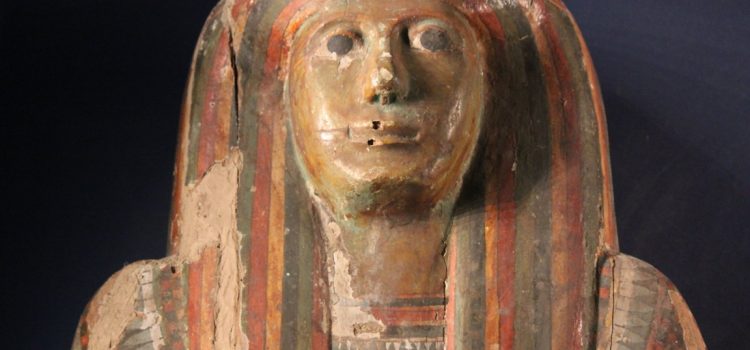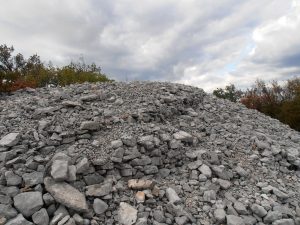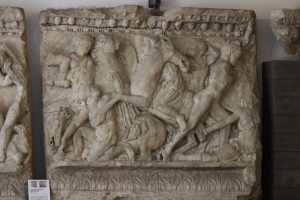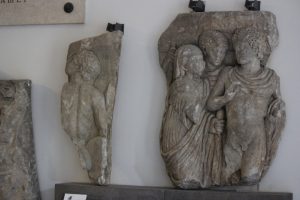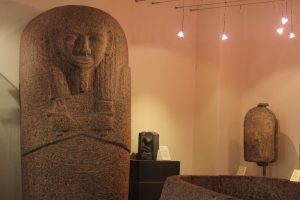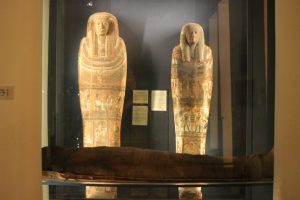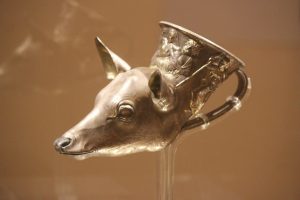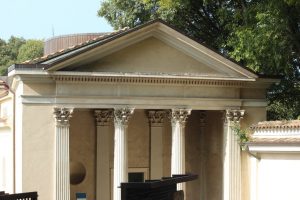La storia del Museo inizia nel 1833 con l’inaugurazione del cenotafio di Johann Joachim Winckelmann, insigne studioso di storia antica e arte classica, considerato fondatore della moderna storia dell’arte e padre dell’archeologia, morto tragicamente a Trieste l’8 giugno del 1768. Il monumento a Winckelmann divenne il centro del futuro museo che nacque con lo scopo di favorire lo studio dell’arte e dell’archeologia.
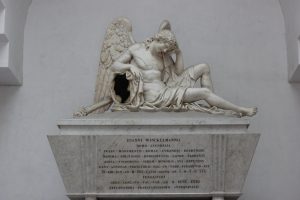
La raccolta del materiale antico fu favorita dalla posizione geografica di Trieste e dalle relazioni commerciali-marittime con le terre classiche dall’Egitto fino alla Mesoamerica. Il Museo è ospitato dal 1925 in un edificio neoclassico di tre piani e conserva accanto ai materiali archeologici della preistoria e della protostoria locale, la collezione egizia, quelle dei vasi greci, Tarantina e Cipriota, e le sale dedicate alla civiltà romana e maya.
I reperti che documentano le usanze e i riti dei primi insediamenti umani sul territorio provengono, in particolare, dalle grotte del Carso, dai Castellieri del Carso triestino e istriano e dallo straordinario sito di Santa Lucia di Tolmino sull’alto Isonzo in cui sono state trovate 7000 tombe a incinerazione databili tra il VIII e il IV secolo a.C.
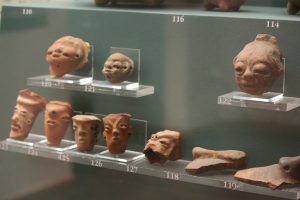
La collezione Maya “Cesare Fabietti” è formata principalmente da una serie di figurine antropomorfe e zoomorfe realizzata in terracotta da una popolazione di cultura maya databile tra il 600 e 1000 d.C.
I reperti romani derivano in gran numero da Aquileia, da Tergeste, dall’Istria e dalle zone degli stati confinanti. Tra questi è esposta un’importante serie di rilievi di sarcofagi attici che sono stati prodotti in Grecia tra la fine del II e il III sec. d.C., in particolare si notano due grandi frammenti di Amazzonomachia della fine del II sec. d.C.
e il frammento di un sarcofago attico con il mito di Ippolito.
Una grande esposizione è dedicata ai reperti provenienti dall’antico Egitto, circa un migliaio di pezzi giunti nell’Ottocento e nel primo Novecento. In particolare tra i reperti appartenenti all’epoca faraonica spicca per importanza il grande sarcofago in granito rosa dal peso di sei tonnellate del dignitario Suty-nakht, lo scriba reale preposto al Tesoro del Signore delle Due Terre, che proviene con tutta probabilità da Menfi e
il sarcofago in legno stuccato e dipinto del sacerdote Pa-sen-en-Hor, completo del secondo coperchio (l’involucro di cartonnage) e della mummia ancora intatta. Stele, pyramidion, fogli di papiro, vasi canopi, statuine raffiguranti le principali divinità, animali sacri, amuleti e un insieme di materiali greco-romani, copti e islamici completano il panorama sull’antica civiltà dei faraoni.
Un grande patrimonio del Museo è la straordinaria collezione dei vasi greci e
in particolare il favoloso rhyton d’argento. Un vaso configurato a testa di giovane cerbiatto con decorazione sul collo raffigurante una scena mitologica con Borea che rapisce Orizia. Il vaso è databile verso la fine del V secolo a.C. e, probabilmente, è stato lavorato in una bottega di argentiere nelle colonie greche sulla costa del Mar Nero.
L’Orto Lapidario, annesso al Museo, sorgeva intorno al monumento alla memoria di Johann Joachim Winckelmann e nella zona occupata dal cimitero cattolico di San Giusto. Aperto al pubblico nel 1843 custodisce epigrafi, monumenti e sculture di epoca romana. Il tempietto ospita il cenotafio di Winckelmann ed espone una preziosa collezione di sculture greche appartenuta agli Arcadi Sonziaci.
Il Museo si affaccia sul Giardino del Capitano, così denominato per la sua pertinenza al Capitano cesareo, che reggeva la città in nome dell’Imperatore d’Austria e dimorava nel Castello di San Giusto. Qui sono conservate sculture, lapidi ed iscrizioni di epoca medioevale-moderna.


